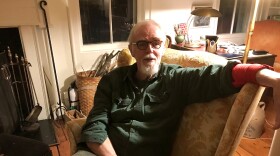Fair warning: The following commentary is self-congratulatory and may not be appropriate for all, or any, audiences.
A few years back I received a tour of Google’s New York City headquarters in Manhattan’s Chelsea neighborhood. The massive building occupies an entire city block at 8th Avenue between 15th and 16th street. 12,000 people work there. At least they did before the pandemic. I was writing a column for the Wall Street Journal and Google rolled out the red carpet, though it might be more appropriate to describe it as a small, sky blue throw rug because Google prides itself on its imperturbable egalitarian ethos.
And the place was indeed cool. Important meetings were held in casual nooks and crannies. Young, hip workers, lots with Ivy League pedigrees, sped around the five-acre complex on Razor scooters. There were playrooms filled with ping-pong tables, Lego bricks and massage chairs. And the food in the employee cafeteria was the best part of all. An epic salad bar. Roast turkey. Glazed ham. A veritable parade of desserts. Free, of course.
I even got to roadtest Google Glass. You may remember Google Glass, the smart eyeglasses with optical display. It flopped for numerous reasons, including that there was no discernable need for them.
For all its amenities Google vaguely creeped me out if only because there was no reason ever to leave. Which I suppose is the point. If nourishment is always available you don’t have to scavenge lunch for yourself in the real world. And if fresh air is required I’m sure there must be some sculptural outdoor terrace, probably with ergonomic benches and chairs. The logic, I suppose, is that the fewer reasons to leave the Googleplex, as it’s affectionately called, the more time one can devote to work.
Lunch at Google made me think of my own workday dining experiences during my twenties, the age many Google employees are when they join the company fresh out of college. My first job was at Newscenter 4, NBC local news in New York. It was located at the network’s iconic headquarters at 30 Rockefeller Plaza. Nonetheless, I left the building for lunch every day. One day I’d go to a Brazilian restaurant, the next day Swiss or Korean. Simply leaving the skyscraper and getting fresh air while doing a little people watching felt restorative.
I went to work for the New York City Department of Correction, in its public affairs office on Centre Street a couple of years later. It was a dour Depression era building made bearable by Chinatown’s and Little Italy’s lunchtime culinary offerings.
I realize that was decades ago. When I took a job with the Wall Street Journal in recent years I noticed that almost everyone seemed to eat lunch at his or her cubicle out of Tupperware containers brought from home. I have no doubt it’s cheaper. Back when I was starting out you could get a respectable restaurant meal with several courses for a few bucks. But penny pinching didn’t seem to explain everything. It felt as if the unquestioning mindset was that people were expected, perhaps even felt most comfortable lunching at their desks. They didn’t acknowledge or appreciate the therapeutic benefits of leaving the office, of clearing your head, of experiencing a short blast of freedom.
I shared my skepticism about Google’s utopian society in my column.
A few weeks ago I was listened to this esteemed radio station when I caught an interview with Clive Wilkinson, the architect who designed Google’s headquarters twenty years ago, the guy behind the ping pong tables and massage chairs. Mr. Wilkinson confessed to NPR reporter Bobby Allyn that he’d created a monster. “I think it’s dangerous to have an overt dependency between the worker and the company,” he said.
Mr. Wilkinson argued that the radical comfort of Google’s offices, with its satellite food stations and game rooms, the blurring of the line between work and play, is bad for creativity. “Creative work doesn’t happen in a condition of luxury,” he explained.
He argues that never leaving the complex, being handed everything, can lead to burnout. Mr. Allyn intoned during his voiceover, “They never go to cafes or Laundromats or the grocery store because everything is handed to them.”
But you can’t blame it all on coddling paternalistic trillion dollar tech platforms like Google. Or the Wall Street Journal, for that matter. They’re not forcing people to eat at their desks. One is free to come and go. The problem seems as much with workers who apparently don’t go stir crazy, who accept that being tethered to their desks is the way of nature. Maybe they spent too much time as children playing video games; staring at a computer monitor all day feels more normal than braving midtown or Chelsea’s lunch crowds.
Except there aren’t many crowds, or workers, at the moment. People are still working from home. Perhaps that will be one of the beneficial side-effects of the pandemic. They’ll get better acclimated to a world where, as Clive Wilkinson, Google’s architect, seems to suggest, playing hooky in small increments redounds to the mental health of workers and might even boost the bottom line of their employers.
Ralph Gardner, Jr. is a journalist who divides his time between New York City and Columbia County. More of his work can be found at ralphgardner.com
The views expressed by commentators are solely those of the authors. They do not necessarily reflect the views of this station or its management.





